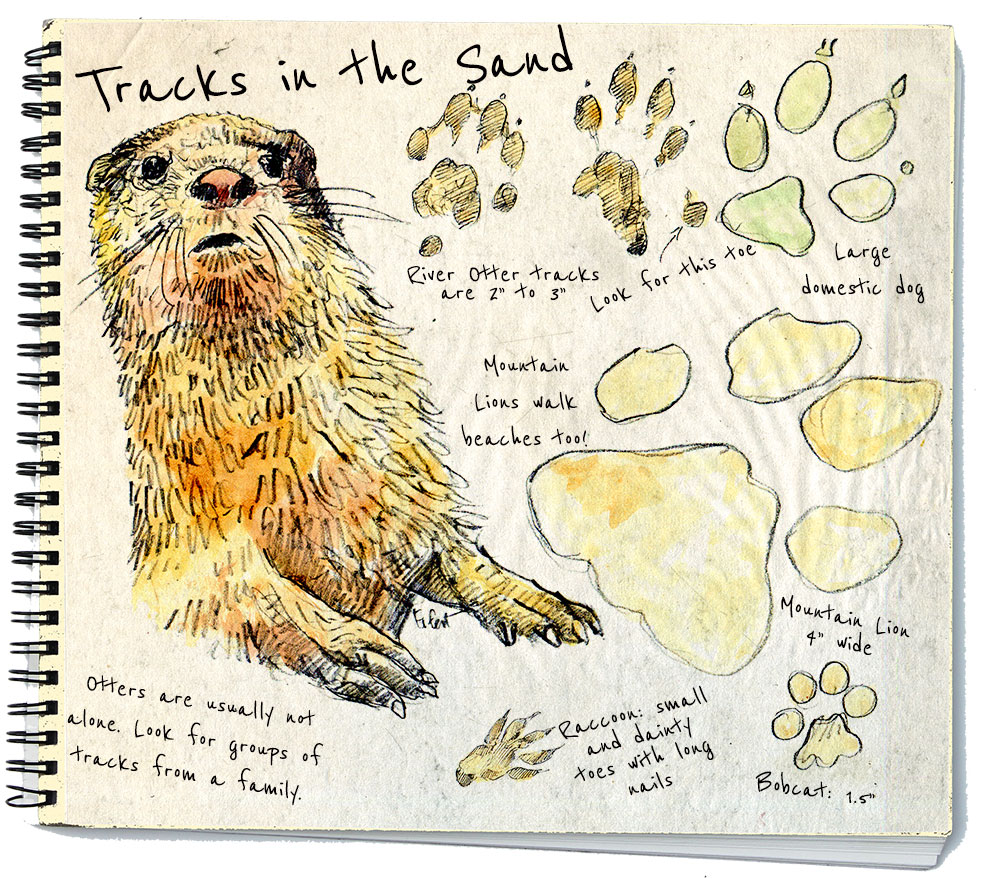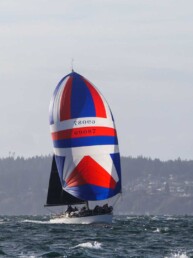If you can identify the tracks, you know know which furry friends visited the beach recently.
 Land your boat or dinghy on a sandy beach and you’ll probably soon see animal tracks in the sand. The most common are dog, bobcat, mountain lion, river otter, and humans. If you’re lucky, it’s a mix of all four four-legged varieties and not too many of the two-legged type.
Land your boat or dinghy on a sandy beach and you’ll probably soon see animal tracks in the sand. The most common are dog, bobcat, mountain lion, river otter, and humans. If you’re lucky, it’s a mix of all four four-legged varieties and not too many of the two-legged type.
River otters remind me of an extremely hairy dachshund, same size (to 30 pounds and 3 to 4 feet including tail). Their fur is long and thick, keeping them warm while swimming in our cold waters. The long and strong trail helps propel them like a sculling oar. Though comfortable in the water, they are also at home on land and can run up to 15 miles per hour. I’ve been cornered in a parking lot by an entire family of them!
River otter tracks in the sand should not be confused with their saltier brethren—sea otters rarely come ashore and aren’t common in the Salish Sea anyway. Look for details. The hind feet show a single claw apart from the other four. Front feet show all five like a dog. All will show front claws and you might even see the connecting web between the toes.
Dogs, on the other hand, show claws but not the separated hind toe. Cougars have huge prints like big dogs, but don’t show claws. Bobcat tracks are only 1.5 inches across and only four toes show.
Here’s the thing to remember. It matters little that you actually SAW the critter that made the track, because you saw proof it was here. I’d say that’s good enough.
Larry Eifert
Larry Eifert paints and writes about the Pacific Northwest from Port Townsend. His large-scale murals can be seen in many national parks across America, and at larryeifert.com.






